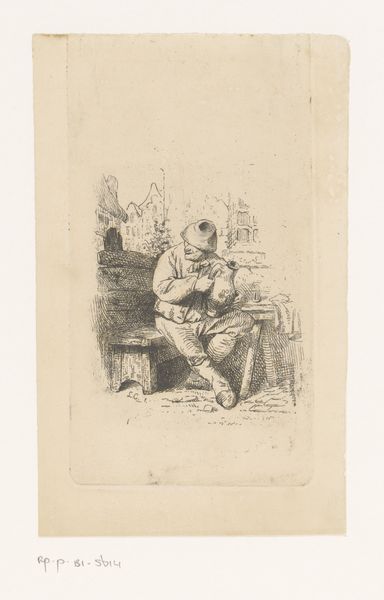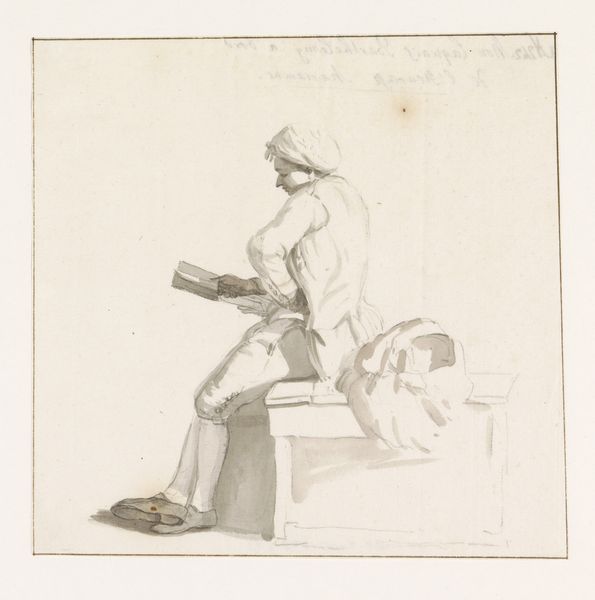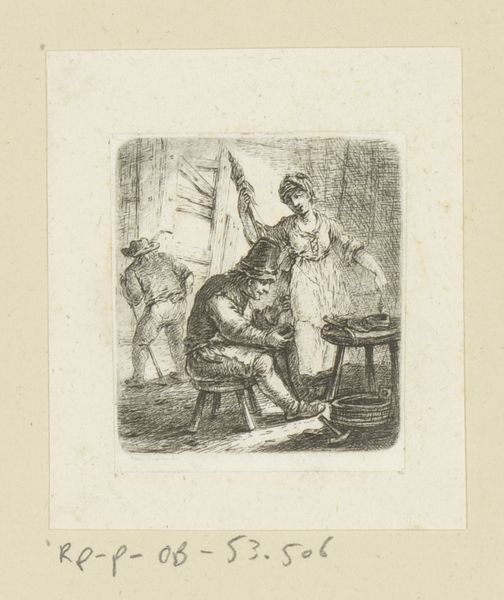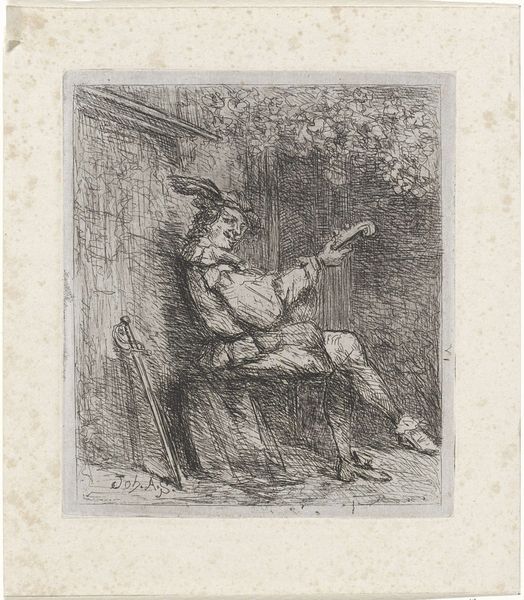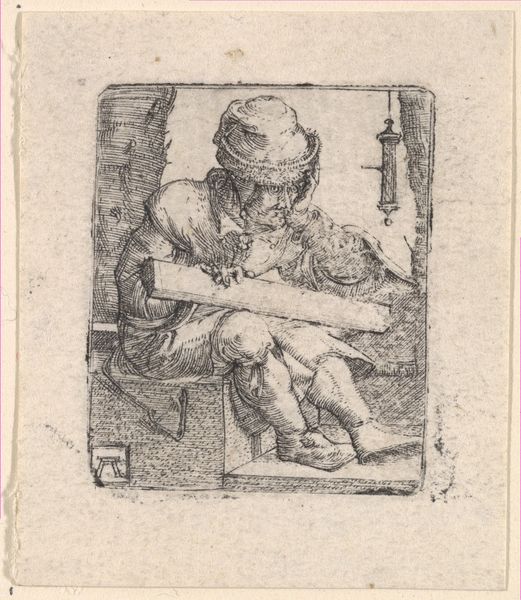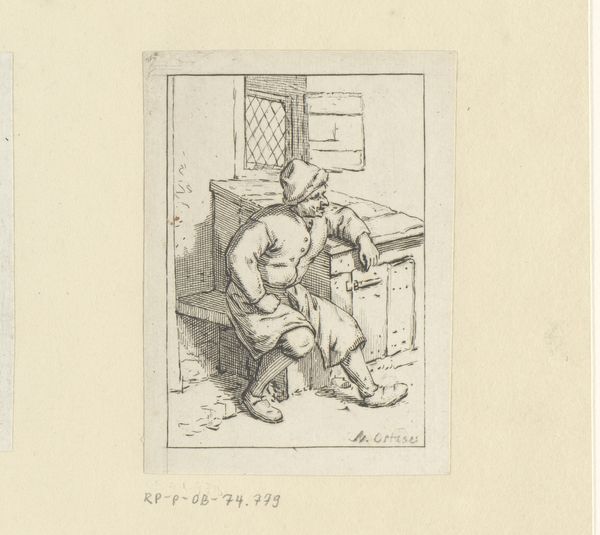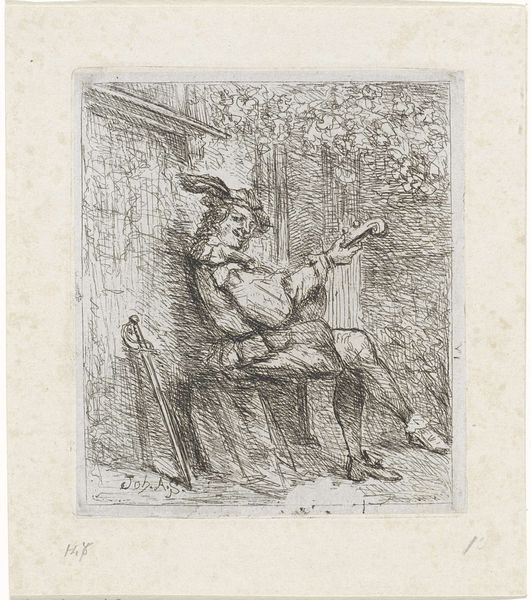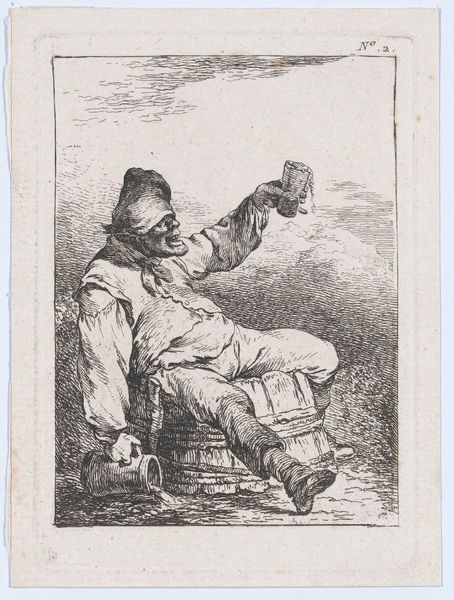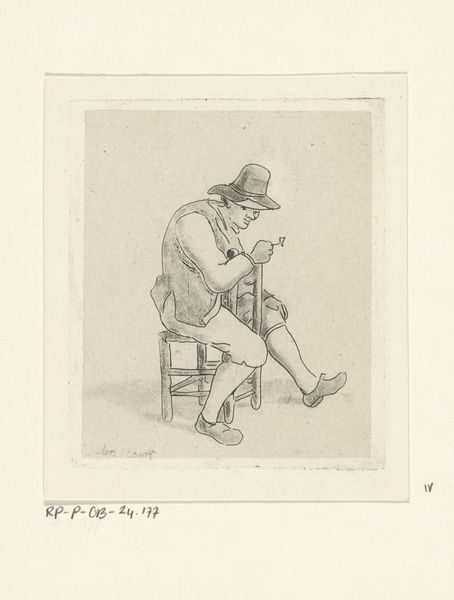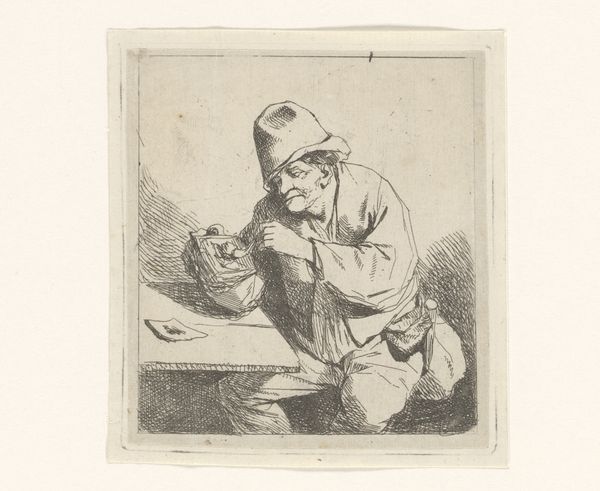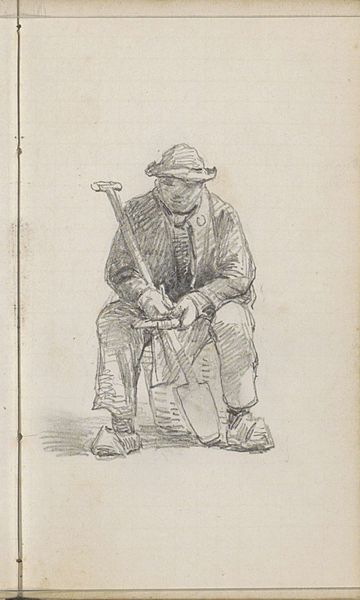
drawing, print, paper, engraving
#
portrait
#
drawing
# print
#
paper
#
genre-painting
#
engraving
Dimensions: height 65 mm, width 63 mm
Copyright: Rijks Museum: Open Domain
Curator: Here we have Johann Andreas Benjamin Nothnagel’s "Zittende man met kroes en pijp," made in 1772. It's a genre painting done as an engraving. Editor: My first thought? Weariness. A profound sense of someone deeply entrenched in a particular way of life, both burdened by it and resigned to it. The low vantage point also gives me the impression that the world has a limited point of view of him. Curator: Indeed. Think about how images of working-class men, specifically those of the late 18th century, were used to construct ideas about labor, poverty, and national identity. We might look to shifts in class structure in order to understand how a piece like this functioned within discussions around socioeconomic status. How was the ordinary person constructed as "other?" Editor: The symbols are potent here. The pipe speaks of leisure, or rather a corrupted leisure; the tankard, a comfort perhaps sought too readily; his peculiar headwear signals an identification, not just a style, but membership in a certain class. Curator: It seems to me that his headwear is as significant as his mug. Considering that attire frequently stood in for profession or status, one might wonder whether this person had a clearly established place in the socioeconomic hierarchy of his time, whether he's representative of his identity as a German. Editor: Note also the almost claustrophobic nature of the engraving. The scene feels enclosed. This might indicate social and possibly economic obstacles and their lack of upward mobility. But within that, notice that Nothnagel highlights the man’s features. He captures both the man’s resignation and strength of his survival, perhaps offering a quiet dignity. Curator: You are spot on. With Nothnagel, we’re not simply presented with a historical snapshot, but rather a complex layering of signifiers concerning what the underclass identity looked and felt like during his lifetime. The quiet is indeed in the resilience in the character. Editor: Yes. Ultimately, the emotional charge here, so long after its creation, speaks to how symbols create visual traditions of history that endure. Curator: Agreed. It’s this blend of symbolism and cultural messaging that make such artwork thought-provoking, and essential to deconstruct if we’re trying to address contemporary problems involving representation.
Comments
No comments
Be the first to comment and join the conversation on the ultimate creative platform.
